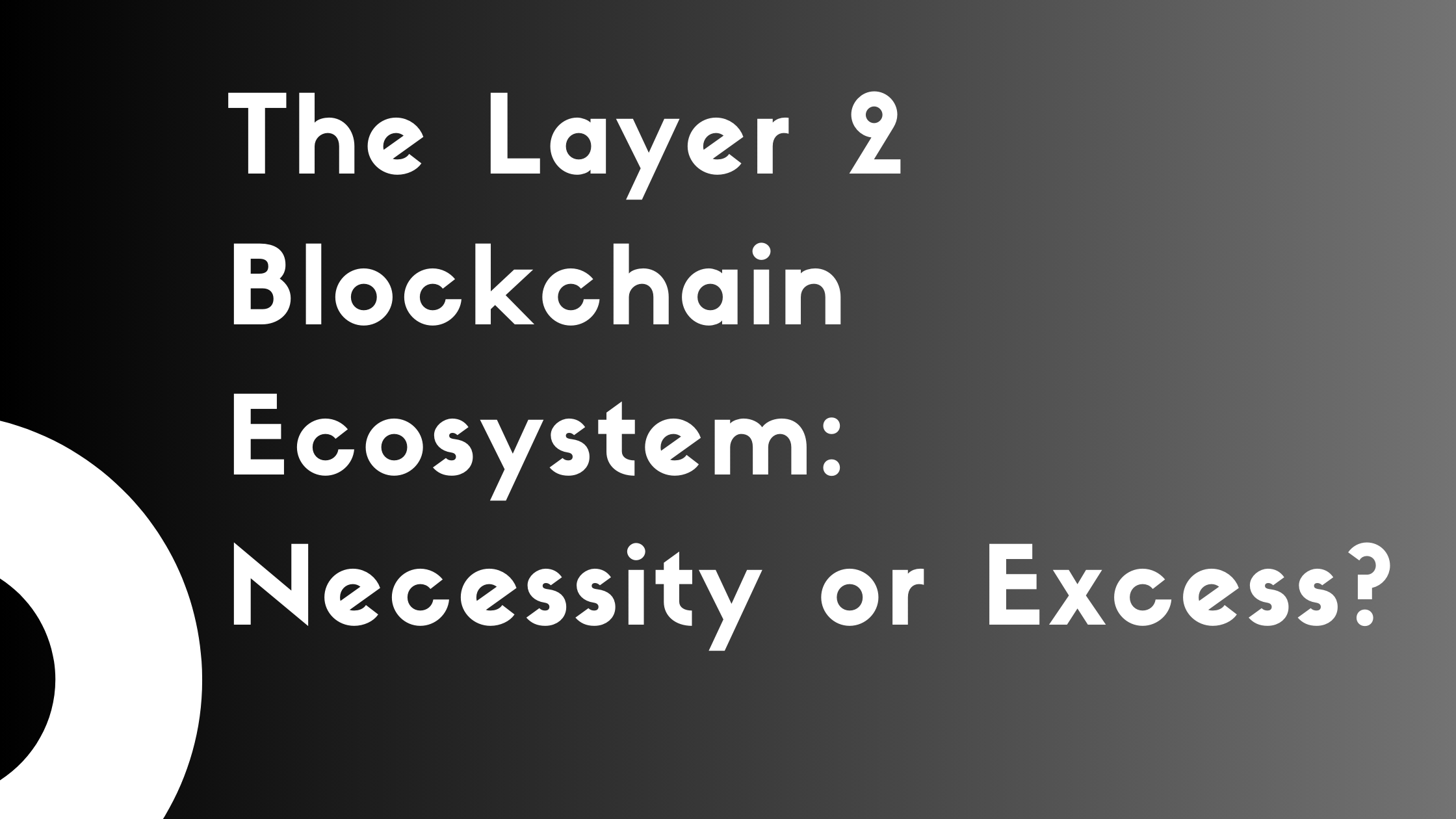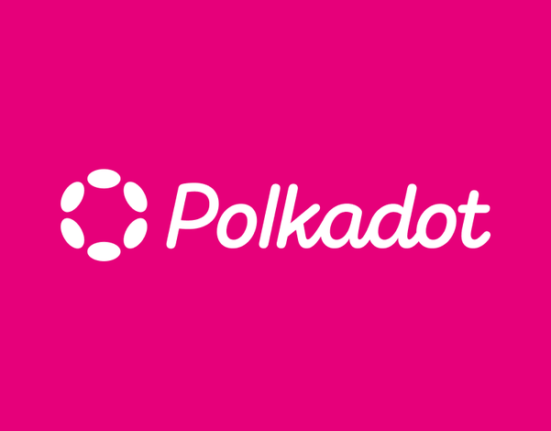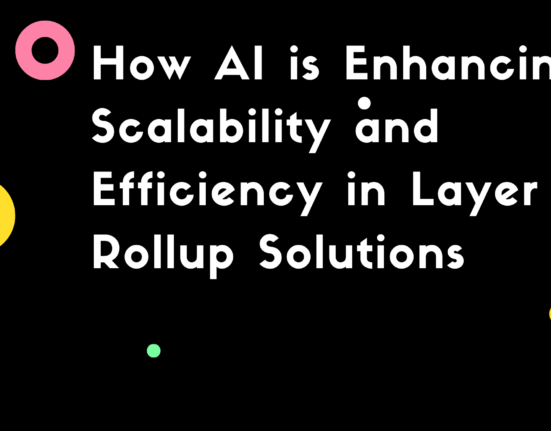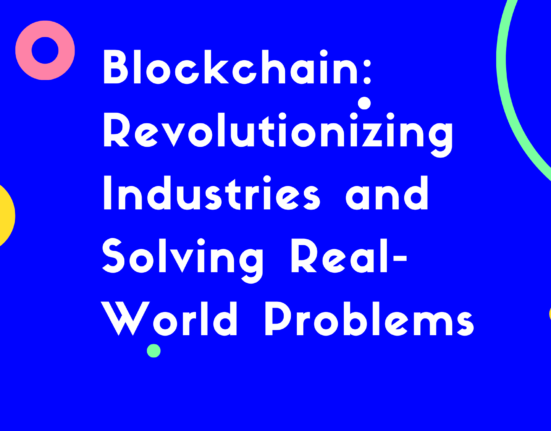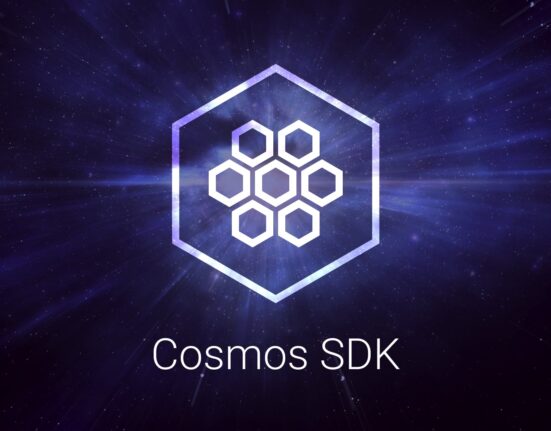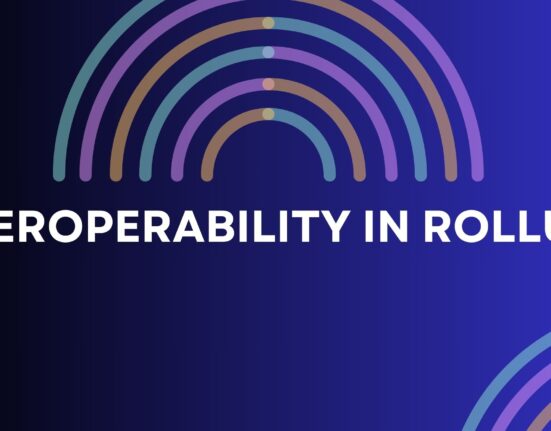The blockchain world is witnessing an unprecedented surge in Layer 2 (L2) solutions. As Ethereum and other major blockchains grapple with scalability issues, a plethora of L2 chains have emerged, promising faster transactions and lower fees. This proliferation of L2 solutions has sparked a critical debate within the blockchain community: Do we really need so many L2 chains, or are we facing a case of technological excess?
To answer this question, we need to delve deep into the current state of the L2 ecosystem, examining its benefits, challenges, and potential future trajectories. This article aims to provide a comprehensive analysis of the L2 landscape, backed by current data and expert insights, to help readers navigate this complex and rapidly evolving sector of the blockchain industry.
Contents
- 1 Understanding Layer 2: A Technical Overview
- 2 The Current L2 Landscape: A Data-Driven Overview
- 3 The Case for Multiple L2 Chains: Driving Innovation and Specialization
- 4 The Drawbacks of L2 Proliferation: Fragmentation and Complexity
- 5 Regulatory and Environmental Considerations in the L2 Landscape
- 6 The Path Forward: Consolidation, Integration, and User Experience
- 7 Conclusion: Balancing Innovation and Efficiency in the L2 Ecosystem
Understanding Layer 2: A Technical Overview
Layer 2 refers to a secondary framework or protocol built on top of an existing blockchain system, commonly referred to as Layer 1. The primary goal of these L2 solutions is to solve the transaction speed and scaling difficulties faced by major cryptocurrency networks like Ethereum, without compromising the security or decentralization of the underlying blockchain.
The L2 ecosystem encompasses various technological approaches, each with its own strengths and trade-offs. Rollups, both Optimistic and Zero-Knowledge (ZK), have emerged as leading solutions. Optimistic Rollups, employed by platforms like Arbitrum and Optimism, assume transactions are valid by default and only run computation in case of challenges. This approach allows for faster transaction processing but requires a delay period for withdrawals to ensure security. ZK-Rollups, on the other hand, use complex cryptographic proofs to validate transactions off-chain, offering near-instant finality but at the cost of higher computational requirements.
Other L2 technologies include State Channels, which allow participants to conduct multiple transactions off-chain before settling the final state on the main chain, and Plasma chains, which create a hierarchy of child chains that periodically commit to the main chain. Each of these solutions offers a unique balance of scalability, security, and decentralization, catering to different use cases and preferences within the blockchain ecosystem.
The Current L2 Landscape: A Data-Driven Overview
As of Q2 2024, the L2 ecosystem has shown remarkable growth and diversity. According to data from L2Beat, there are now over 47 active L2 projects on Ethereum alone, a significant increase from just a handful in 2021. This proliferation is not just in numbers but also in adoption and value. DeFiLlama reports that the Total Value Locked (TVL) in L2 solutions has surpassed $31.5 billion, representing a staggering 215% year-over-year growth.
The impact of L2 solutions on the broader Ethereum ecosystem is profound. The Ethereum Foundation estimates that as of 2024, approximately 52% of all Ethereum transactions are now occurring on L2 networks. This shift has led to a significant reduction in congestion on the Ethereum mainnet and a corresponding decrease in transaction fees. Users of L2 solutions typically enjoy fee reductions of 70-98% compared to mainnet transactions, making blockchain interactions more accessible to a wider audience.
Among the various L2 solutions, a few have emerged as clear leaders in terms of adoption and TVL. Arbitrum leads the pack with $8.7 billion TVL, followed closely by Optimism at $7.2 billion. Other significant players include dYdX, Loopring, and zkSync, each holding billions in locked value. This concentration of value in a handful of solutions suggests that while there is room for multiple players, the market may naturally gravitate towards a few dominant platforms.
The growth in L2 adoption is also reflected in user numbers. DappRadar reports that daily active users across all L2s have reached approximately 3.2 million. This represents a significant portion of the overall blockchain user base and indicates growing mainstream acceptance of these scaling solutions.
The Case for Multiple L2 Chains: Driving Innovation and Specialization
The proliferation of L2 solutions, while potentially overwhelming, has undeniably spurred innovation in the blockchain space. The competitive landscape has pushed teams to continually improve their technologies, leading to significant advancements. For instance, ZK-rollups have seen a fivefold improvement in proof generation time since 2022, greatly enhancing their viability for real-time applications. Similarly, Optimistic rollups have managed to reduce their fraud proof windows from seven days to just 24 hours, addressing one of the key criticisms of this approach.
This innovation extends beyond individual L2 solutions to the broader ecosystem. The need for interoperability between different L2s has led to the development of cross-L2 protocols like LayerZero and Hop Protocol. These innovations facilitate seamless asset transfers between different L2s, enhancing the overall flexibility and usability of the ecosystem.
Another key argument for the existence of multiple L2 chains is the ability to cater to specialized use cases. Different L2s have emerged to serve specific niches within the blockchain ecosystem. For example, dYdX, built on StarkEx, focuses on high-frequency trading and has achieved transaction speeds exceeding 10,000 TPS. Immutable X has carved out a niche in the NFT space, specializing in efficient minting and trading of non-fungible tokens. Meanwhile, platforms like Aztec have focused on privacy, offering confidential transactions on top of Ethereum. This specialization allows each L2 to optimize for its specific use case, potentially offering better performance than a one-size-fits-all solution.
The existence of multiple L2 solutions also provides a form of redundancy and enhances system resilience. This was clearly demonstrated during Arbitrum’s seven-hour outage in June 2023. Despite this significant disruption to one of the largest L2 networks, users were able to quickly shift their activities to other platforms like Optimism, ensuring continuity of service for the broader ecosystem. This ability to maintain operations even in the face of individual platform issues has contributed to an impressive 99.99% uptime for Layer 2 services collectively in 2023, despite occasional outages on individual networks.
From a user and developer perspective, the variety of L2 options provides valuable choice and flexibility. A 2024 survey of 5,000 blockchain developers revealed that 78% preferred having multiple L2 options to choose from based on their specific project requirements. Similarly, 62% of DeFi users reported regularly using more than one L2 solution, indicating that different platforms serve different needs even for individual users.
The Drawbacks of L2 Proliferation: Fragmentation and Complexity
While the abundance of L2 solutions drives innovation and provides specialized options, it also presents significant challenges. One of the most pressing issues is ecosystem fragmentation. As users and assets spread across multiple L2 platforms, we’ve seen a noticeable impact on liquidity and efficiency. A recent study found that the average liquidity per decentralized exchange has decreased by 25% compared to single-chain environments. This fragmentation complicates trading strategies and can lead to less efficient price discovery.
The complexity introduced by multiple L2 solutions also poses a significant barrier to user adoption. A usability study conducted by UsabilityHub in 2024 found that new users took an average of 45 minutes to understand and navigate between different L2 solutions. Moreover, 35% of surveyed users reported confusion about which L2 to use for specific tasks. This complexity not only deters new users from entering the ecosystem but also increases the cognitive load on existing users, potentially hampering the overall growth of the blockchain space.
The proliferation of L2 solutions has also led to a dilution of resources and development efforts. As venture capital spreads across more projects, the average funding for L2 projects decreased by 30% in 2023. This could potentially slow down the development of individual projects and the ecosystem as a whole. Furthermore, developer surveys indicate that 40% of blockchain developers are now working on L2-related projects. While this demonstrates the importance of L2 solutions, it also raises concerns about resources being diverted from other crucial areas of blockchain development.
Interoperability between different L2 solutions remains a significant challenge. As of 2024, there are over 15 different bridge protocols attempting to solve L2-to-L2 transfers. Users often have to pay fees of 2-5% when moving assets between different L2s, reducing the cost benefits that L2s are meant to provide. More concerning are the security implications of these bridges. In 2023, bridge hacks accounted for 47% of all DeFi exploits, highlighting the vulnerability introduced by the need to move assets between different L2 networks.
Regulatory and Environmental Considerations in the L2 Landscape
The rapid growth of the L2 ecosystem has not gone unnoticed by regulators worldwide. In 2023, the U.S. Securities and Exchange Commission (SEC) issued guidance specifically addressing the legal status of L2 tokens, signaling increased regulatory scrutiny of this space. The European Union’s Markets in Crypto-Assets (MiCA) regulation, which came into effect in 2024, includes provisions that directly impact L2 solutions, particularly in areas of consumer protection and operational resilience. In Asia, Japan’s Financial Services Agency (FSA) has taken a proactive approach, introducing a licensing system for L2 operators in late 2023. These regulatory developments underscore the growing importance of L2 solutions in the broader blockchain ecosystem and highlight the need for projects to navigate an increasingly complex regulatory landscape.
From an environmental perspective, the impact of L2 solutions is nuanced. While L2s generally reduce the computational burden on the main chain, thereby decreasing the overall energy consumption of blockchain transactions, they do introduce their own energy requirements. Ethereum’s shift to Proof-of-Stake in 2022 dramatically reduced its energy consumption by 99.95%, setting a new baseline for environmental considerations in the blockchain space. In this context, a 2024 study by the University of Cambridge estimated that L2 solutions collectively consume about 0.1% of the energy used by the Ethereum mainnet pre-merge. While this represents a significant improvement in energy efficiency, it also highlights that the environmental impact of blockchain technology remains an important consideration even in the L2 ecosystem.
The Path Forward: Consolidation, Integration, and User Experience
As the L2 ecosystem matures, industry analysts predict a phase of consolidation. Goldman Sachs estimates that by 2026, the top 5 L2 solutions will control 80% of the total L2 market share. This consolidation is already becoming evident, with M&A activity in the L2 space increasing by 150% in 2023. Larger projects are acquiring smaller, specialized solutions to expand their capabilities and user base. This trend towards consolidation could help address some of the fragmentation issues while still maintaining a healthy level of competition and specialization.
Efforts towards standardization and interoperability are also gaining momentum. The Ethereum L2 Standardization Working Group, formed in 2023, aims to establish common standards for L2-to-L2 communication. Projects like Polygon Avail and Celestia are working on modular blockchain designs that could serve as shared data availability layers for multiple L2s. These initiatives could significantly reduce the complexity of the L2 ecosystem and improve overall efficiency.
Improving user experience remains a critical focus for the L2 ecosystem. Meta-aggregators like 1inch and ParaSwap now offer “L2-agnostic” interfaces, automatically routing transactions through the most efficient L2. Wallet providers such as MetaMask and Rainbow have integrated L2 support directly into their interfaces, simplifying the onboarding process for new users. These developments aim to abstract away the complexity of multiple L2s, providing users with a seamless experience regardless of the underlying infrastructure.
Conclusion: Balancing Innovation and Efficiency in the L2 Ecosystem
The explosion of Layer 2 solutions in the blockchain space represents both a testament to the industry’s innovative spirit and a response to genuine scalability needs. While the current abundance of options drives technological advancement and provides specialized solutions, it also presents challenges in terms of ecosystem fragmentation, user experience complexity, and resource allocation.
As the market matures, we can expect a natural consolidation around the most effective and widely-adopted solutions. However, this doesn’t necessarily mean we’ll end up with a single dominant L2 chain. Instead, we might see a landscape where a handful of complementary solutions coexist, each serving specific needs within the broader blockchain ecosystem.
The key to navigating this evolving landscape will be ongoing efforts to improve interoperability, user experience, and regulatory compliance. As these technologies mature, the goal should be to make the underlying complexity invisible to end-users, allowing them to benefit from the enhanced speed and reduced costs of L2 solutions without needing to understand the intricacies of different chains.
Ultimately, the success of Layer 2 solutions will be measured not by their number, but by their ability to solve real-world problems, drive the mass adoption of blockchain technology, and contribute to a more efficient, accessible, and sustainable digital economy. The current proliferation of L2 chains, while presenting challenges, is a necessary phase in the evolution of blockchain technology. It is through this period of innovation and competition that the most robust and effective scaling solutions will emerge, setting the stage for the next era of blockchain adoption and utility.

Subhadra, a seasoned research analyst, specializes in distilling complex developments in blockchain and AI into insightful narratives. Her expertise lies in providing a nuanced understanding of emerging technologies, making her a trusted source for in-depth and up-to-date analysis at the intersection of blockchain and AI.

